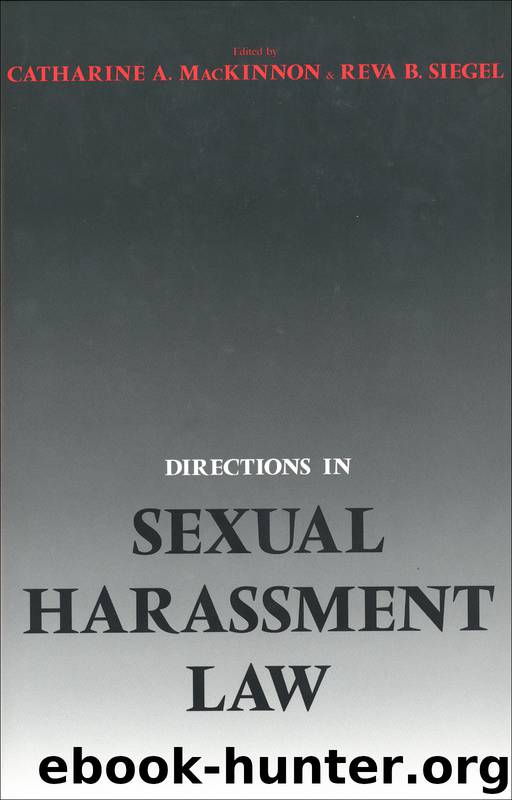Directions in Sexual Harassment Law by Catharine A. MacKinnon & Reva B. Siegel

Author:Catharine A. MacKinnon & Reva B. Siegel
Language: eng
Format: epub
Publisher: Yale University Press
Published: 2004-03-22T05:00:00+00:00
The Purpose of Workplace Speech Regulations
First, the absolute denial of speech concerns in the workplace overlooks how speech rules regulate private relationships of power. A more accurate description of workplace speech doctrine is that employees have speech rights only in relation to broader government goals related to the workplace. Although private employers have enormous power to control their employees’ speech, both the judiciary and Congress have intervened when they determine that policy concerns or statutory mandates outweigh employers’ rights.60 Courts permit government agencies to censor their employees’ political speech that impedes official functions; they protect freedom of expression on matters of public concern only to enable communication necessary for civic participation.61 Both private and public employers’ interest in running an efficient office may override workers’ freedom of speech.
The Supreme Court has been attentive to power imbalances in the workplace in deciding First Amendment disputes. In NLRB v. Gissel Packing Co.,62 the Court upheld restrictions on employer speech during labor organizing to protect employees’ rights of association from employer coercion. In distinguishing workplace speech from speech in public forums, the Court explicitly relied on the “economic dependence of the employees on their employers” and the resulting disparity in bargaining power between the two sides. While the First Amendment protects workers’ speech rights where they further the broader goals of political participation and workers’ right to unionize and bargain collectively, it does not protect speech that interferes with the state’s interest in ridding the workplace of sex and race discrimination. The location of harassing speech is significant, but not because the workplace strips citizens of all speech rights. Rather, the context of employment makes women particularly vulnerable to injury because their livelihood is at stake, and it makes the injury collective because it concretely affects women’s economic status.
Download
This site does not store any files on its server. We only index and link to content provided by other sites. Please contact the content providers to delete copyright contents if any and email us, we'll remove relevant links or contents immediately.
Day by Elie Wiesel(2597)
The Age of Genius by A. C. Grayling(2393)
Gideon's Spies: The Secret History of the Mossad by Gordon Thomas(2238)
The Gulag Archipelago (Vintage Classics) by Aleksandr Solzhenitsyn(1987)
FATWA: Hunted in America by Pamela Geller(1928)
Columbine by Dave Cullen(1768)
Men Explain Things to Me by Rebecca Solnit(1609)
The Rule of Law by Bingham Tom(1594)
Examples & Explanations: Administrative Law by William F. Funk & Richard H. Seamon(1554)
Anatomy of Injustice by Raymond Bonner(1533)
Three Cups of Tea by Greg Mortenson(1521)
That Every Man Be Armed by Stephen P. Halbrook(1480)
ADHD on Trial by Michael Gordon(1476)
The Source by James A. Michener(1459)
Gideon's Spies by Gordon Thomas(1425)
Future Design by Unknown(1389)
Palestinian Walks by Raja Shehadeh(1363)
Constitutional Theory by Carl Schmitt(1348)
Fast Times in Palestine by Pamela Olson(1336)
